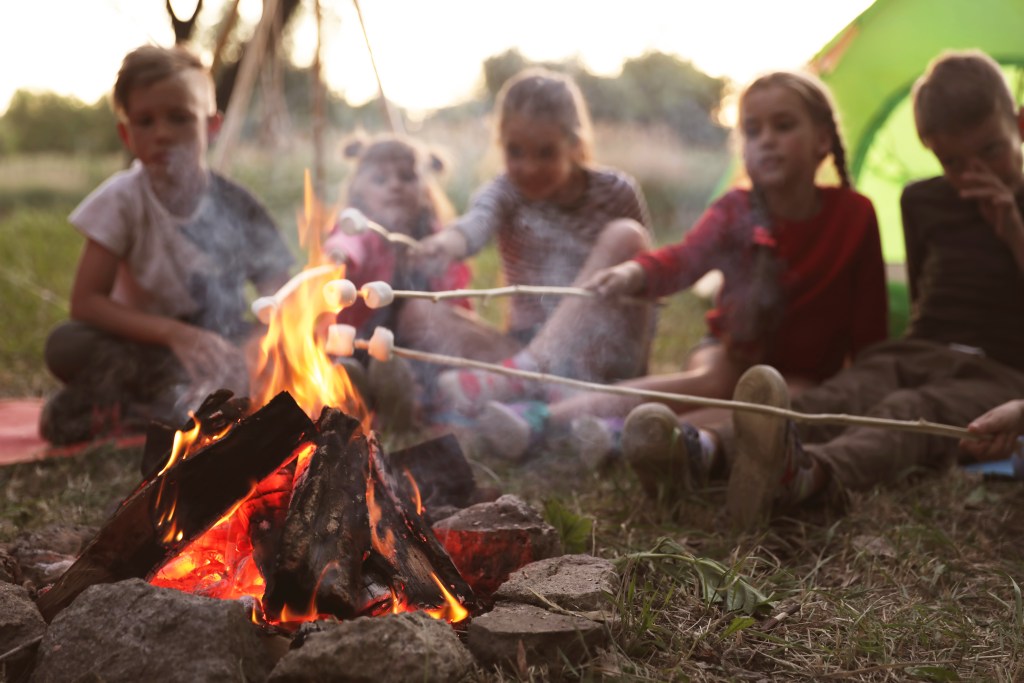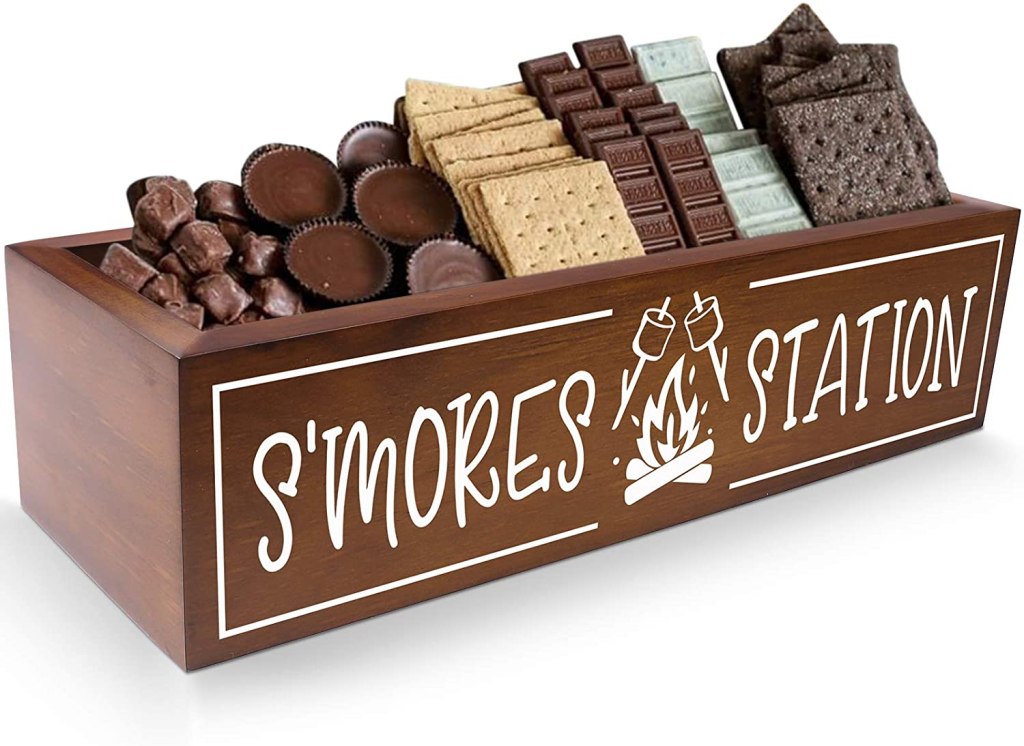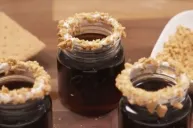S'mores are a classic treat, an irresistible medley of graham cracker, melted chocolate and gooey toasted marshmallow. No camping trip or bonfire night is complete without a few sticks or skewers and all of the necessary ingredients. S'mores are as much about the experience of creating them as they are about eating- do you let yours catch on fire for a charred exterior and gooey middle? Or do you roast yours slowly on all sides for a perfect golden brown shell? No matter how you eat these beloved sweets, learning the history of s'mores makes them even more delicious.
How to Make a S'more
https://www.instagram.com/p/CON-9X0gky3/
For anyone who hasn't had the joy of making this campfire treat, you start out by breaking a graham cracker in two. Then, you break off part of a chocolate candy bar, usually Hershey, that matches your graham cracker in size. The most important part comes next- roasting your marshmallow. Plop that mallow on the end of stick or skewer and begin roasting over a campfire!
The main danger at this stage is your marshmallow getting too gooey and falling into the fire, but you can avoid this by rotating the mallow as it cooks and keeping a close eye on it. Once it's cooked to ooey gooey perfection, it goes on top of the chocolate and graham cracker, with the other piece of graham cracker on top for the most delectable and sweet sandwich!
Some s'mores connoisseurs like to get adventurous by adding other flavors like Nutella or peanut butter. You can also use dark chocolate instead of the classic milk chocolate, or chocolate chips in place of the bar. However, the true form of this tasty treat is with its original ingredients.
Make sure to celebrate National S'mores day on August 10!
The History of S'mores
We all know how delicious this camping dessert is, but even its greatest fans don't know the history of s'mores. First, we'll start with graham crackers. These were invented in mid-19th-century by New Jersey Presbyterian minister Sylvester Graham, who was on a mission to save humanity from our dangerously potent sex drive.
Graham felt that "a moral collapse due to obsession with carnal desires" was impending, and that the food we eat was a contributing factor. To combat this and save his people from moral collapse, he designed a cracker made of wheat flour, wheat bran and coarsely ground germ, which was the graham cracker. Graham believed that these ingredients would combat people's overactive sexual desires.
About a decade later, it became popular in the Northeast to roast marshmallows around the fire. This was a fun, flirtatious activity for the youngins, who took the opportunity to coquettishly feed each other roasted marshmallows from their sticks. Then, in the early 1900s, mallomars and moon pies, which are basically packaged s'mores, were produced.
It's All Thanks to the Girl Scouts

Although the public had already discovered how delectable this combination of ingredients was, no one thought to make a s'more until a girl scouts troop leader changed everything in the 1920's. The first recipe for this camper's confection was in the Girl Scout guidebook "Tramping and Trailing with the Girl Scouts." This book called our beloved s'more a "some more"- which makes sense since it's impossible to stop at one.
The s'mores recipe, created by troop leader Loretta Scott Crew, was meant to feed one troop of girl scouts, and it called for 16 graham crackers, 8 chocolate bars and 16 marshmallows. Along with being called a "some more," the treat was referred to throughout the 1900's as a "graham cracker sandwich." The delicious food combo rose to immediate popularity upon being published, and recipes for it appeared in many cookbooks, one being a Betty Crocker one. The next time you roast a mallow and make a s'more, you can thank Loretta and her hungry girl scouts for your favorite campfire treat!
Products featured on Wide Open Eats are independently selected by our editors. However, when you buy something through our links, we may earn a commission.






